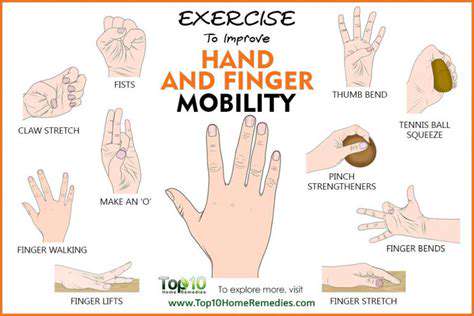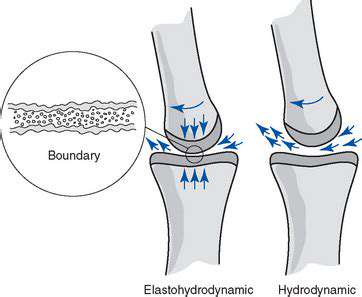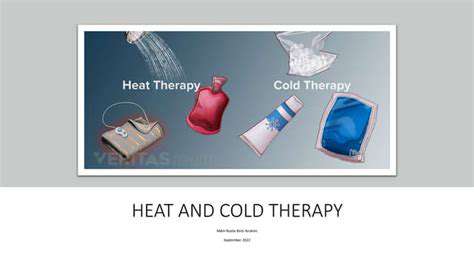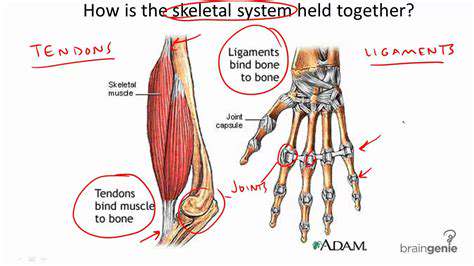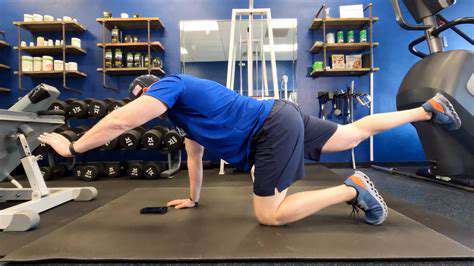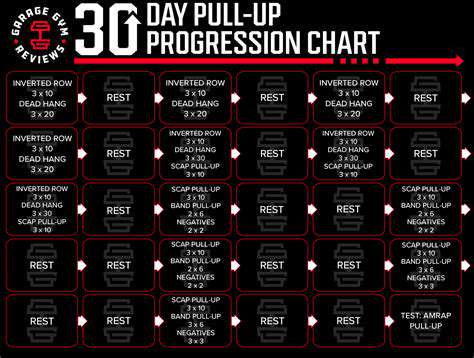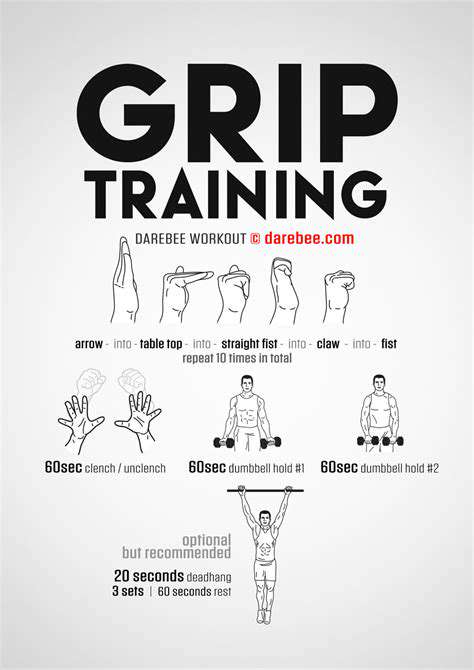Tips for Maintaining Healthy Hand Joints
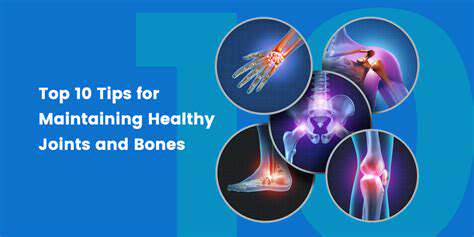
Understanding the Importance of Hand Joint Health
Our hands are remarkable tools, enabling us to interact with the world in countless ways. When joint health declines, even simple acts like buttoning a shirt or opening a jar become frustrating challenges. The hands' intricate network of bones, ligaments, and tendons requires careful attention to maintain optimal function throughout our lives.
Consider how often we rely on our hands during a typical day - from preparing meals to typing emails. This constant use makes them particularly vulnerable to wear and tear. Regular maintenance through proper care and exercise can prevent many common problems before they start.
Common Causes of Hand Joint Issues
Joint problems often develop gradually, with several potential culprits. Repetitive motions from activities like knitting or using power tools can create microscopic damage that accumulates over time. Age-related changes in cartilage and reduced synovial fluid production naturally occur as we grow older. Genetic factors may predispose some individuals to conditions like osteoarthritis, while traumatic injuries from sports or accidents can accelerate joint deterioration.
Environmental factors also play a role. Cold temperatures may increase stiffness, while certain occupations requiring forceful gripping or vibration exposure can contribute to long-term damage. Even our modern reliance on smartphones and keyboards creates new patterns of repetitive stress.
Effective Strategies for Prevention
Proactive care makes a significant difference in preserving hand function. Regular stretching breaks during repetitive activities allow tissues to recover. Strengthening exercises using therapy putty or resistance bands build supportive muscles without overloading joints. Mindful attention to grip technique - using whole-hand grasps rather than pinch grips when possible - distributes forces more evenly across joint surfaces.
Simple modifications in daily life can yield substantial benefits. Choosing kitchen tools with ergonomic handles reduces strain during food preparation. Wearing gloves during cold weather maintains circulation and flexibility. Even maintaining proper nail length prevents unnecessary stress on finger joints during fine motor tasks.
Treatment Options for Hand Joint Pain
When discomfort arises, a tiered approach often works best. Initial conservative measures might include contrast baths (alternating warm and cool water soaks) to improve circulation and reduce inflammation. Topical creams containing menthol or capsaicin can provide localized relief without systemic side effects. Paraffin wax treatments offer deep heat penetration for stiff joints.
For persistent issues, a hand therapist can design customized splints that support affected joints while allowing functional use. Recent advances in regenerative medicine, including platelet-rich plasma injections, show promise for stimulating natural healing processes in damaged joint tissues. Surgical options have also become increasingly sophisticated, with minimally invasive techniques reducing recovery times.
Lifestyle Modifications for Optimal Hand Health
Whole-body wellness directly impacts hand health. Anti-inflammatory diets rich in omega-3 fatty acids (found in fish, walnuts, and flaxseeds) may help reduce joint swelling. Staying hydrated maintains the viscosity of synovial fluid that lubricates joints. Regular cardiovascular exercise improves peripheral circulation, delivering nutrients to hand tissues while removing waste products.
Stress management techniques deserve special attention. Chronic tension often manifests as clenched fists or tight grips during sleep, creating unnecessary joint compression. Mindfulness practices that promote overall relaxation can indirectly benefit hand health by reducing these unconscious patterns of muscular tension.
Ergonomics and Work Habits for Hand Joint Health
Ergonomic Workstation Setup
Creating a hand-friendly workspace requires attention to multiple elements. Keyboard height should allow forearms to rest parallel to the floor with wrists in neutral alignment. Vertical mice or trackballs can eliminate the twisting motions associated with traditional mice. Monitor placement at eye level prevents compensatory neck positions that often lead to altered hand positioning.
Consider the cumulative effect of small adjustments. A document holder placed between keyboard and monitor reduces excessive head movements that often accompany typing. Voice recognition software for extended composition tasks gives hands periodic rest. Even subtle changes like reducing keyboard actuation force or using lighter pens can make a difference over months and years of use.
Repetitive Movement Prevention
The key to preventing overuse injuries lies in variation. Rotating between different input devices (mouse, trackpad, stylus) engages slightly different muscle groups. Programming frequent microbreaks (even 10-15 seconds every 20 minutes) allows for brief stretching and repositioning. Consciously alternating hands for tasks normally performed dominantly - like mouse use or phone holding - distributes workload more evenly.
Environmental modifications can support these behavior changes. Placing frequently used items just slightly out of immediate reach encourages periodic movement. Using timers or software reminders helps establish new work rhythm patterns. Even something as simple as standing during phone calls naturally leads to posture changes that benefit the entire upper extremity.
Proper Hand Hygiene and Rest
While cleanliness is important, overwashing can strip protective oils from skin. Alcohol-based sanitizers often prove less drying than frequent soap-and-water washing. Applying moisturizer after hand cleansing helps maintain skin integrity - particularly important since cracked skin around joints can become painful and limit mobility.
Nighttime provides crucial recovery opportunities. Wearing loose-fitting gloves to bed prevents unconscious clenching. For those with existing discomfort, sleeping with hands slightly elevated on a pillow can reduce overnight swelling. Paying attention to sleep posture (avoiding positions that compress wrists) supports circulation to the hands.
Dietary and Lifestyle Factors
Nutritional support for joints extends beyond typical supplements. Foods rich in anthocyanins (dark berries) and quercetin (onions, apples) may help combat inflammation. Adequate protein intake supports connective tissue maintenance. Emerging research suggests the gut microbiome's influence on systemic inflammation may indirectly affect joint health, making probiotic foods potentially beneficial.
Hydration deserves special emphasis. The cartilage in our joints relies on water content for shock absorption. Carrying a water bottle serves as both a practical reminder to drink and an opportunity for gentle grip-strengthening exercises during the day. Herbal teas with anti-inflammatory properties (like ginger or turmeric) can contribute to both fluid intake and potential therapeutic benefits.
Lifestyle Factors Affecting Hand Joint Health

Lifestyle Choices and Hand Hygiene
Hand care extends far beyond simple cleanliness. The products we choose for daily use significantly impact skin and joint health. Harsh detergents and antibacterial soaps can disrupt the skin's acid mantle, making hands more vulnerable to irritation and infection. Opting for pH-balanced cleansers and lukewarm water preserves the skin's natural protective barriers while still effectively removing pathogens.
Seasonal adjustments prove important - heavier creams protect against winter dryness, while lighter formulations prevent summer greasiness. Wearing gloves for household chores limits exposure to harsh chemicals. Even something as simple as patting rather than rubbing hands dry can prevent unnecessary friction on delicate skin.
Environmental Factors and Hand Care
Our hands interact with countless surfaces daily, each presenting potential challenges. Extreme temperatures demand special precautions - insulated gloves for cold weather prevent stiffness, while breathable varieties protect against overheating in warm conditions. UV protection often gets overlooked for hands, yet sun exposure contributes significantly to skin aging and may exacerbate certain joint conditions.
Vibration exposure from power tools or machinery warrants particular attention. Anti-vibration gloves and proper tool maintenance can significantly reduce harmful transmission to joints. Even recreational activities like cycling or weightlifting benefit from proper glove use to distribute pressure and improve grip without excessive joint compression.
Air quality impacts hand health more than many realize. Low humidity environments (like heated winter interiors or airplane cabins) rapidly dehydrate skin. Portable humidifiers and strategic placement of houseplants can help maintain healthier microenvironments for hands throughout the day.
Seeking Professional Guidance for Hand Joint Issues
Understanding the Significance of Hand Joint Health
Our hands serve as primary interfaces with the physical world, making their health fundamental to independence and quality of life. The psychological impact of hand dysfunction often goes underappreciated - difficulty with gestures, personal care, or affectionate touch can affect emotional well-being and social connections. Early attention to minor symptoms prevents them from developing into more limiting conditions.
Identifying Potential Causes of Hand Joint Pain
Pain patterns often provide important diagnostic clues. Morning stiffness lasting over 30 minutes may suggest inflammatory arthritis, while pain worsening with use typically indicates mechanical joint issues. Nerve-related symptoms like tingling or electric shock sensations point toward different underlying mechanisms. Even the specific joints involved (distal versus proximal finger joints) can help differentiate between various conditions.
Common Symptoms to Watch Out For
Beyond obvious pain and swelling, subtle changes often signal developing problems. Gradual loss of pinch strength might indicate early arthritis. Difficulty turning doorknobs or opening packages could reveal emerging joint instability. Changes in handwriting or sudden drops in typing accuracy may reflect declining fine motor control warranting evaluation. Even seemingly unrelated symptoms like nail changes or skin texture alterations can provide important diagnostic information.
Seeking Professional Medical Evaluation
Specialized hand care providers bring unique expertise. Hand therapists (occupational therapists with additional certification) offer particularly valuable perspectives on functional challenges and adaptive strategies. Rheumatologists specialize in inflammatory conditions, while hand surgeons focus on structural issues. Some physical medicine specialists now offer advanced diagnostic ultrasound for real-time joint assessment.
Effective Treatment Options and Management Strategies
Modern treatment approaches emphasize personalized combinations of modalities. Therapeutic exercises can be precisely calibrated to individual needs using dynamometers and other measurement tools. Custom 3D-printed splints now allow perfect anatomical fits. Emerging technologies like laser therapy and specialized joint mobilization techniques expand non-invasive options. Even simple interventions like thermal biofeedback training help patients develop better awareness and control of hand tension patterns.
